-
Posts
6,159 -
Joined
-
Last visited
Content Type
Profiles
Blogs
Forums
American Weather
Media Demo
Store
Gallery
Posts posted by Quincy
-
-
3 hours ago, Iceresistance said:
Yes, the Pink area matches the SPC's High Risk area, Ventrice's experimental automated forecast uses the colors for the SPC's Convective Outlook. (Thunderstorms, Marginal, Slight, Enhanced, Moderate, & High (Could not find the Pink))
It’s also changed substantially over the past couple of days. I advise extreme caution when looking at severe weather indicies more than 3-4 days out, especially when they’re *probably* based on a deterministic model, rather than ensembles. It’s also kind of silly to show high risk-equivalent graphics for a week out…
A lot can change, but here are my initial thoughts:
Monday looks like limited moisture return, especially with northward extent. I’d imagine the greatest threat remains across East Texas/Louisiana. Remember that we’re early in the season and antecedent dry conditions exist.
Tuesday may have the greatest apparent threat. Dryline could mix slightly farther east than progged, due to ongoing drought conditions. Maybe a more “classic” April event just east of I-35? Parameter space looks volatile, along with deep shear vectors nearly perpendicular to the dryline. Not overhyping yet, but operational models have shown run-to-run signals for at least a couple of days now.
Wednesday diverges in the models, but the threat should shift toward the Mississippi Valley. Wind fields are forecast to become more unidirectional with northward extent, along with less favorable moisture closer to an occluding surface low. Could be yet another threat around AR/LA/MS? Not sold on a farther north threat yet, but it’s still possible.
-
 2
2
-
 1
1
-
-
Shear vectors look close to parallel to the boundary once again, but those forecast wind fields are nothing to snooze on. I’d expect a similar outcome to the last event, but possibly a bit more widespread in terms of wind damage. Tornado potential, not much confidence beyond the QLCS threat, but it only takes one. (Remember New Orleans…)
-
 2
2
-
 1
1
-
-
At quick glance, it looks similar to last Tuesday’s event. Wind fields support more of a mixed mode/linear event, but that can yield several QLCS tornadoes, along with isolated discrete storms, especially on the southern end of the line and possibly immediately ahead of it.
-
 1
1
-
-
Shear vector orientation, virtually uncapped warm sector and a very moist boundary layer = messy and clustered storm mode. A very sloppy evolution so far, but can’t say it’s that far off from what most convection allowing models suggested.
-
Any reports from that storm? I chased it from Taylorsville to Decatur before bailing. Couldn’t see anything with the terrain and swarm of chasers. Only caught a few brief glimpses of a scuddy wall cloud.
-
Everything is pretty much evolving as expected. The squall line in western Mississippi may be advancing slightly quicker than forecast, but that’s common for these setups.
The wildcard was open warm sector development. It’s underway across southern Mississippi and adjacent Louisiana. A couple of cells near/just west of Hattiesburg appear to be in the process of better organizing. This coincides with cloud breaks and 100+ J/kg 0-3km MLCAPE. I’d keep an eye on that area.
-
Good discussion from SPC. I agree that the ceiling is going to come down to how much warm sector activity there is. The parameter space will strongly favor supercells with low-level rotation, given hodograph shape and sizable 0-3km CAPE.
The other factor that may limit the outbreak to some degree is that deep layer shear vectors are almost parallel to the boundary, where forcing is stronger. (SW as opposed to more westerly, in higher end events like 4/28/14)
The result should be a broken band or two with QLCS circulations and embedded supercell structures. Wind damage with isolated tornadoes can be expected in that regime, while a conditional risk for open sector tornadic supercells will exist as far east as western Alabama later today.
Any sustained open sector supercells will have the better potential to be longer lived, in terms of tornado production.
-
 5
5
-
-
-
2 hours ago, Powerball said:
Parameter-wise and synoptically, 00z NAM was similar to the 00z HRRR. The big difference that the NAM maintain a relatively stout cap, which keeps convective coverage/intensity in check.
I’m not sure the cap is very strong. If you look at the 00z and 06z 3km NAM, they both show cellular convection along the Dallas - Round Rock corridor. If anything, it’s more concerning that the NAM is showing more isolated convection, as it’s the case that many of these setups get junky fast with too much convection. That doesn’t seem to be the case here.
The only slight limiting factor may be modest low-level lapse rates, due in part to early precipitation. Still, even with 0-3km lapse rates only near 6 C/km, the quality of the boundary layer moisture profile supports large 0-3km MLCAPE, on the order of 100-200 J/kg. This, along with strong wind profiles supports a significant tornado threat
As echoed before, this is not exactly a common occurrence for a synoptic severe weather outbreak, this far south.
HRRR looks nasty with intense, semi discrete convection. NAM is nasty with a weaker looking broken band of convection within a volatile parameter space. Either scenario isn’t good (if you don’t like damaging thunderstorms).
-
 3
3
-
-
47 minutes ago, BrandonC_TX said:
Looks like we got our first severe thunderstorm warning over Odessa, with a risk for 70 mph wind gusts. Dew points are only in the 30s and 40s there, but there is still a little instability present.
Very strong wind fields - 00z MAF (Midland-Odessa) sounding sampled 107 knots of 0-6 km shear. Impressive wind profiles will drive the severe threat through Thursday night.
-
 1
1
-
-
Doesn’t look like a major outbreak. Thursday probably has the most potential of the two days.
Timing has slowed down, trending threat areas farther west. Wednesday looks like mainly a nocturnal threat at this juncture across Texas and possibly parts of Oklahoma. Thursday could be more potent across the lower Mississippi Valley.
-
 1
1
-
 1
1
-
-
8 minutes ago, dmillz25 said:
What did logan finish with?
1043 PM SNOW
LOGAN AP 42.36N 71.01W
01/29/2022 M23.8 INCH
SUFFOLK MA ASOS-
 3
3
-
-
-
Short term/high res guidance seems to be struggling with banding over eastern Mass - underestimating the strength of the deformation band, but not picking up well on the dryslot on the Cape & Islands.
The band may collapse a bit back east, but the PVD-BOS corridor and points just east are going to get absolutely smoked for at least a few more hours.
Noting a dryslot of sorts over Tolland County though.
-
Looks like damaging winds will be the predominant threat, as a robust 50+ knot low-level jet is present across much of Oklahoma. Can’t rule out a QLCS tornado or two, given the degree of low-level shear.
-
 1
1
-
-
13 minutes ago, nwohweather said:
Basically a Cat 1 hurricane in West Kansas right now. Some serious wind up and down that whole line
Pretty impressive low level wind profiles. LLJ in the 50-60kt range at 850mb with 0-1km SRH of 400-600 m2/s2. The line is even breaking into semi discrete storms in the eastern Texas panhandle, although deep shear vectors become increasingly parallel to the cold front with southward extent.
-
Cell in NW Oklahoma is definitely on the cool side of the warm front and will probably dissipate. The cell west of Chickasha appears to be near or just NE of the warm front and will likely weaken over time, keeping OKC out of the main threat. It may pose an isolated tornado threat for another hour or two
The focus shifts west to the MDT risk zone where supercell structures are embedded within a squall line. The best moisture is south of the KS/OK border, but strong low-level shear may support some continued tornado risk in southwestern Kansas, despite a stable near-surface layer.
-
Great AFD out from NWS Amarillo…
Area Forecast Discussion National Weather Service Amarillo TX 314 PM CDT Tue Oct 12 2021 .MESOSCALE UPDATE... ...Severe weather likely tonight... * Synoptic Overview: The much-ballyhooed strong western CONUS upper low is finally knocking at our doorstep. Strong upper level forcing will overspread an increasingly juicy surface with the best dynamics set to impinge on the area beginning around sunset. Trends in the synoptic scale have been a little slower and a little further west with the best sfc moisture, meaning a few more folks in the Panhandles could get in the action. The rest of this discussion predominately applies to the eastern half of the combined Panhandles. * Mesoscale: So much to unpack in the mesoscale, we`ll break it down into PROS and CONS for a significant severe event... PROS: - Very strong vertical wind shear with bulk and effective shear values 60-70 kts among a near-perfectly turning profile. In addition to promoting a supercell storm mode with any discrete convection, shear-induced buoyancy will increase the strength of updrafts. - Some of the best shear is in the low levels, with 0-1 SRH values exceeding 400 m2/s2. - Surface moisture has been underestimated in the models so far today, and even so, model forecasts for MLCAPE this evening are in excess of 2500 J/kg. - Strong surface moisture advection will allow sfc theta-e values to INCREASE after sunset in spite of falling temperatures. - Low level forcing for ascent is pretty weak until a cold front sweeps through very late tonight, not clearing the eastern Panhandles until nearly 3 AM. This will likely help foster at least a quasi-discrete storm mode. As we like to say in the Panhandles, when in doubt, discrete wins out. - For any rooted storms, LCLs are basically scraping the ground. That`s not common around here. - There are more PROS but we`ll keep it to these for now. CONS: - A strong (though not deep) isothermal layer bordering on an inversion is forecast by all models to develop after sunset around h8. Resulting low level lapse rates are expectedly putrid in this narrow layer and will almost certainly hamper weaker convection and even probably hamper ongoing supercells. - That`s honestly about it for major cons, but it`s a pretty big one as it could keep convection slightly elevated (doesn`t limit the hail threat but would limit tornado threat). * Threats: The most likely threats will be the potential for very large hail and potentially destructive wind gusts but the most concerning threat will be the possibility for strong and potentially long-tracked tornadoes. Strong and violent tornadoes tend to happen in the presence of MLCAPE, MLLCL, and shear numbers similar to what was discussed above. * Timing & Location: The worst of it should be 6 PM - 2 AM tonight east of a roughly Guymon to Panhandle to Claude line. Storms will be moving at very high rates of speeds, likely over 50 MPH and in the dark so that will increase the danger. * Summary: This event has the potential to be a top 3 Panhandles severe event in 2021. Simpson
-
Seems to have a bit more potential than Sunday night. Still think the storm mode may get messy, but even with those concerns, I’d expect at least a few noteworthy tornadoes after dark.
Moisture return has been steadily occurring with mid/upper 50s dew points already into the OK/TX panhandles. Placement and timing remind me a bit of 11/16/15. Can’t overlook the intensity of the low level jet tonight.
-
 2
2
-
-
Recent HRRR runs show a sharp dryline bulge forming in far southwestern Oklahoma this afternoon with convective initiation around 23z. Of course these solutions feature a lone supercell tracking toward OKC after dark. Let’s not do that again.
-
High res models handled this event well. SPC seemed to go rather aggressive, despite messy CAM solutions and deep shear vectors nearly parallel to the cold front and dryline. Maybe Oklahoma bias?
The models did handle the triple point semi-discrete supercell well.
Storm chasing was a pain today as everyone and their neighbor’s uncle was out. I’m glad it busted, for safety sake. OKC dodges another one.
-
-
-
How can I better help explain it, Kev?



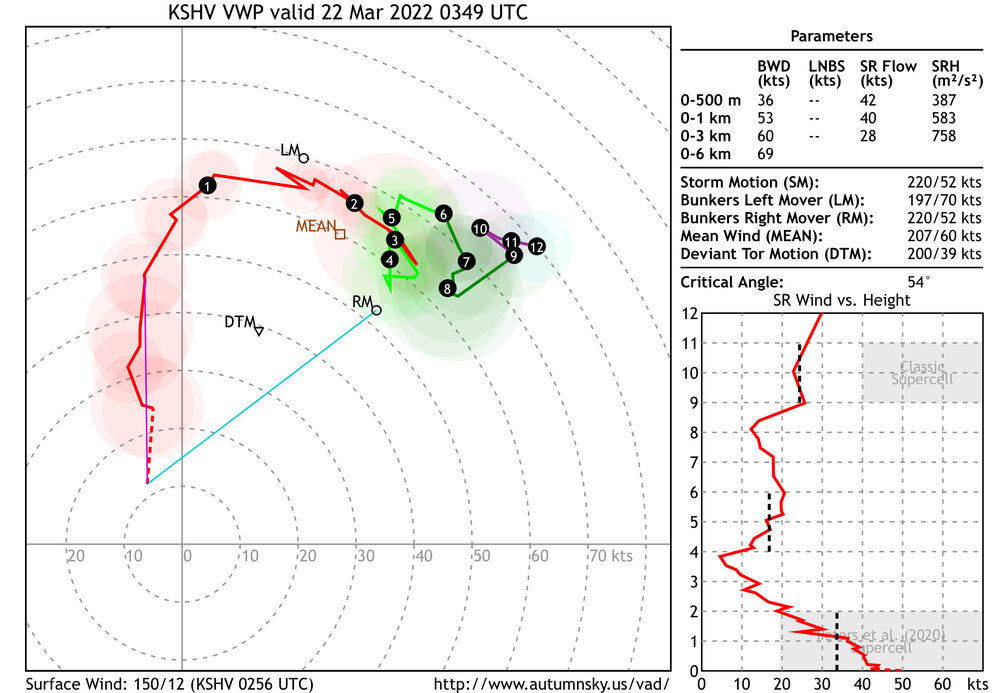
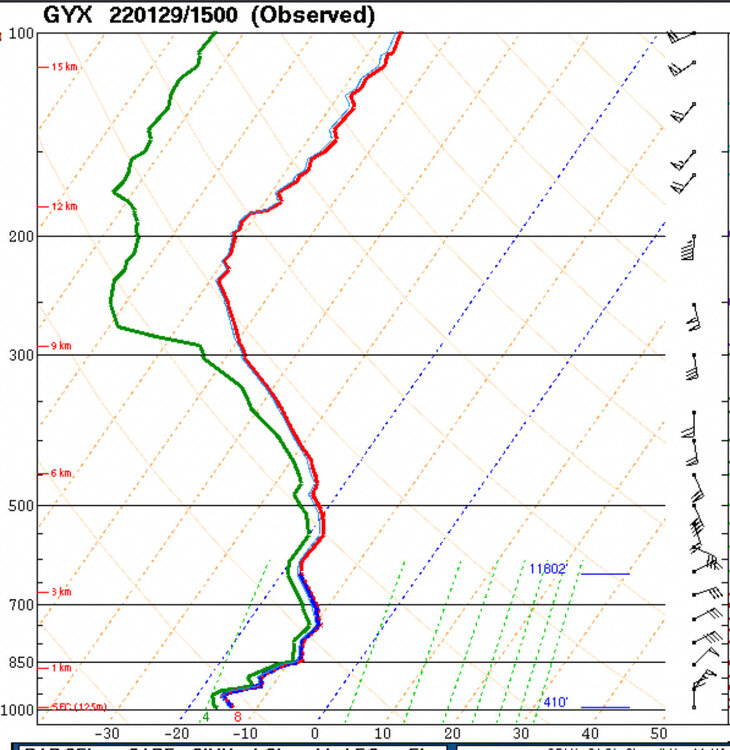
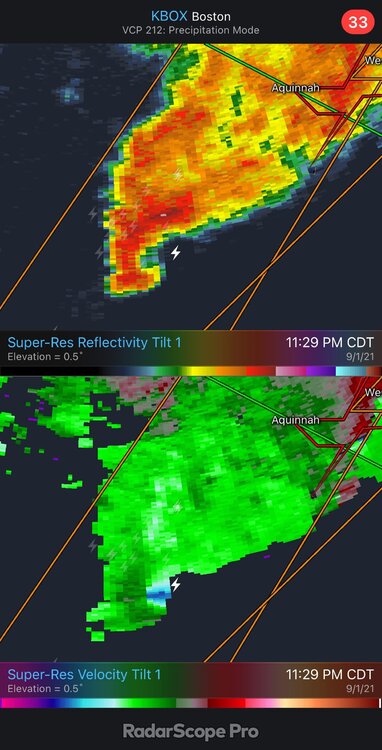
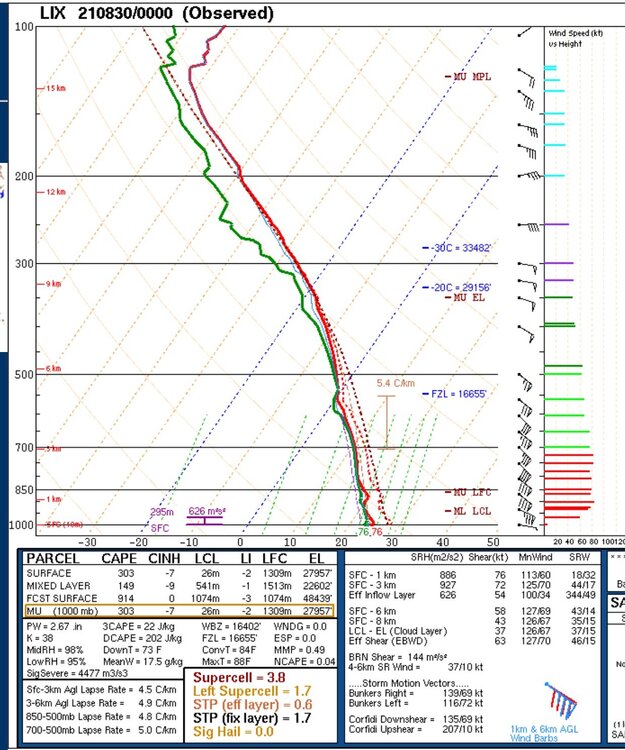
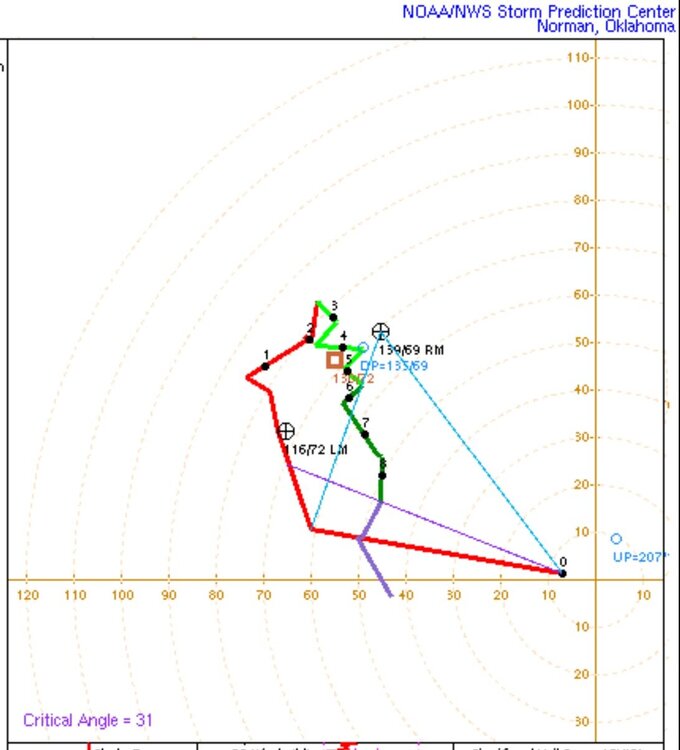
April 10th - April 13th(?) Severe Weather, Moderate risk in place for Iowa today
in Central/Western States
Posted
I don’t think it’s a slam dunk that there’s initiation up and down the dryline on Tuesday, but I think there’s a strong possibility that the cap is at least locally breached. Any sustained storms that can form will have the potential to produce very large hail and tornadoes.
I can envision a scenario where most areas see nothing, but one or two intense supercells form.
The Euro has been very consistent with convective initiation. The NAM doesn’t convect, but point forecast soundings only show minimal capping. It wouldn’t take much modification at all to break the cap and produce a few intense storms, per NAM progs.